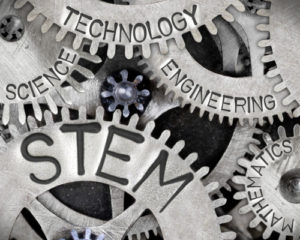
With the prospect that more than 2 million U.S. manufacturing jobs could go unfilled by 2030 due to a skills gap and increased retirements in the science, technology, engineering and math (STEM) field, U.S. Reps. Young Kim (R-CA) and Frank Lucas (R-OK) urged the Biden administration to ensure the federal STEM strategy prioritizes creating a STEM-capable workforce to advance America’s competitiveness against China.
“Having a domestic, STEM-literate workforce ready to develop and deploy critical emerging technologies is foundational to our future competitiveness,” the lawmakers wrote in a Nov. 2 letter sent to White House Office of Science and Technology Policy (OSTP) Director Arati Prabhakar.
They requested an update on OSTP’s progress in developing the next iteration of the Federal STEM Education Strategic Plan, which is authorized by the America COMPETES Reauthorization Act of 2010.
“As you look to finalize the upcoming 2023 Federal STEM Education Strategic Plan, it is vital to consider shortcomings in existing science and technology curricula and training initiatives and to build upon the prior administration’s progress,” wrote Reps. Lucas and Kim, who serve on the U.S. House Science, Space, and Technology Committee.
Rep. Lucas, ranking member of the committee, said in a joint statement released with Rep. Kim that America can’t stay internationally competitive without a strong STEM workforce. “China is already dramatically outpacing us in educating and graduating STEM professionals and we can’t afford to fall any further behind,” he said. “The administration needs to take a comprehensive approach to federal STEM education and workforce so we have a robust strategy in place to strengthen our domestic STEM pipeline.”
Rep. Kim pointed out that the next five-year Federal STEM Education Strategy is due in 2023, but to date there have been no progress updates. “STEM education is vital to unlocking opportunities for students, providing good-paying jobs and boosting global competitiveness,” said Rep. Kim. “Our students are falling behind just as STEM employment demands are projected to grow twice as fast as non-STEM jobs over the next decade.”
In their letter, the members cited federal data from the Bureau of Labor Statistics, which projects that STEM employment in the United States will grow nearly 11 percent over the next 10 years, more than double the growth rate of non-STEM occupations.
At the same time, the U.S. Department of Education last month released the 2022 National Assessment of Educational Progress Report Card showing that 4th- and 8th-grade mathematics scores recorded their largest decrease in decades.
They noted that the 2018 Federal STEM Education Strategic Plan envisions a diverse pool of STEM-literate Americans, including college-educated STEM practitioners and skilled trade workers, as well as a multidisciplinary approach to student engagement and investment to advance technological innovation and literacy.
“We urge OSTP to ensure these initiatives continue in the next Federal STEM Education Strategic Plan,” they wrote.



